1. Automated Movement Generation
AI systems can now generate novel dance movements and sequences, giving choreographers a creative springboard. By inputting parameters like tempo or mood, a generative model suggests original footwork, gestures, and transitions. This spares choreographers from always starting from scratch and provides an ever-growing library of ideas. Over time, the machine suggestions become more refined as the model trains on diverse dance styles. The choreographer remains the decision-maker, using the AI’s output as inspiration rather than a final product.
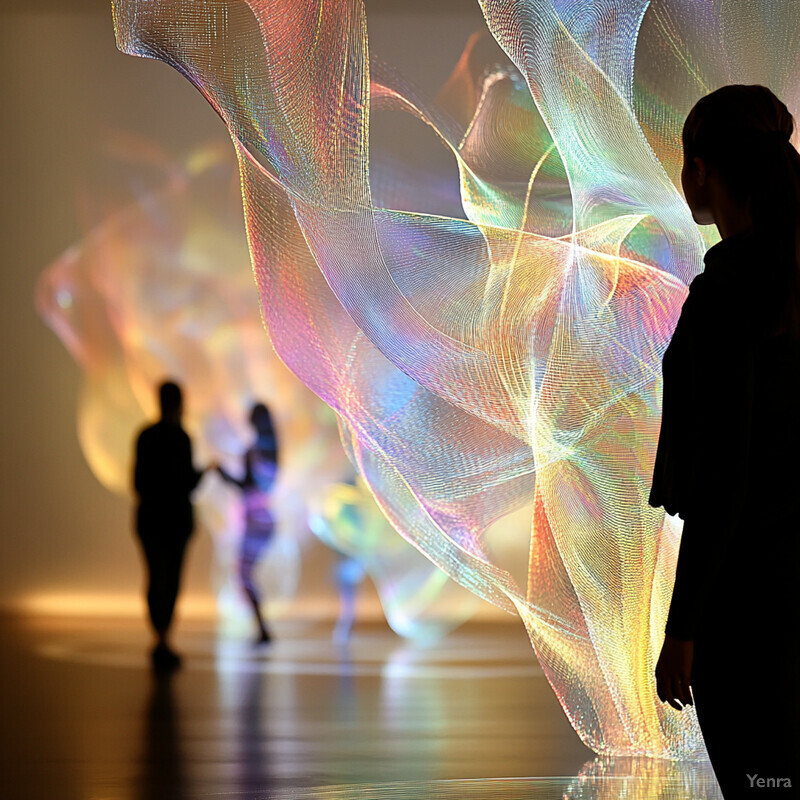
Recent AI models demonstrate the feasibility of dance sequence generation. For example, a 2025 study introduced a generative adversarial network that produces dance moves aligned with various styles. In blind evaluations, 85% of professional dancers rated the AI-generated sequences as highly consistent with the intended style – a 13% improvement over prior methods. The system also achieved quantifiable gains in video quality metrics, indicating more fluid and realistic motion. Such results suggest that AI can create physically plausible choreography building blocks that dancers could realistically perform.
2. Music-to-Movement Mapping
Advanced algorithms analyze music to automatically suggest dance moves that mirror the soundtrack’s rhythm and mood. By processing a song’s tempo, beat patterns, and emotional tone, AI maps audio features to appropriate movements or transitions. This ensures choreography is tightly synchronized with musical accents and phrasing. Choreographers can also specify intensity or style, and the system adapts the suggestions for genres from ballet to hip-hop. The outcome is a dance sequence that feels organically connected to the music, enhancing the audience’s audio-visual experience.
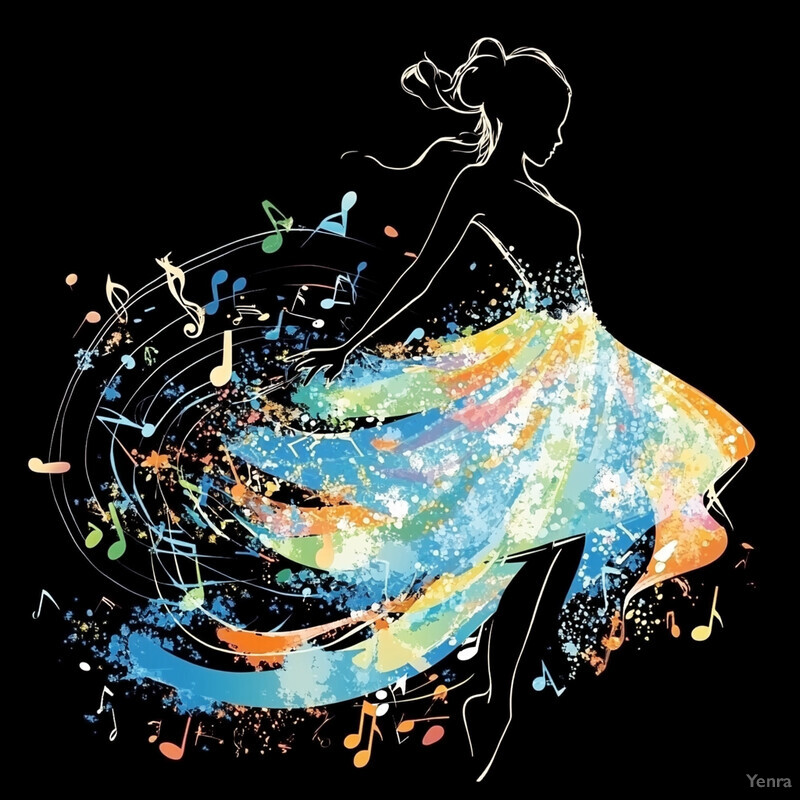
AI-driven music-to-dance systems are yielding promising results in aligning movement with melody. Researchers at CVPR 2023, for instance, presented a model that generates group choreography directly from music, coordinating multiple virtual dancers with the song’s structure (Le et al., 2023). Similarly, other studies integrate music synchronization mechanisms into dance generators to ensure the moves hit the beats and reflect the song’s energy. Objective evaluations show these models can improve rhythm alignment in generated dances compared to earlier approaches (e.g., reducing off-beat motions), while subjective tests report that dancers find the AI-suggested choreography matches musical cues well. Such evidence highlights AI’s growing ability to translate audio cues into cohesive movement sequences.
3. Style Adaptation
Machine learning enables choreographers to blend and switch between dance styles seamlessly. An AI model trained on many genres—ballet, hip-hop, folk, and more—captures each style’s signature movements. The system can then translate a sequence in one style to another, or even intermix elements, while preserving the original choreography’s intent. This means a routine could fluidly shift from classical ballet aesthetics to street dance isolations. Style adaptation broadens creative possibilities, allowing innovative fusions that respect the integrity of each tradition. It also assists dancers in cross-training by adapting choreography to match their familiar style.
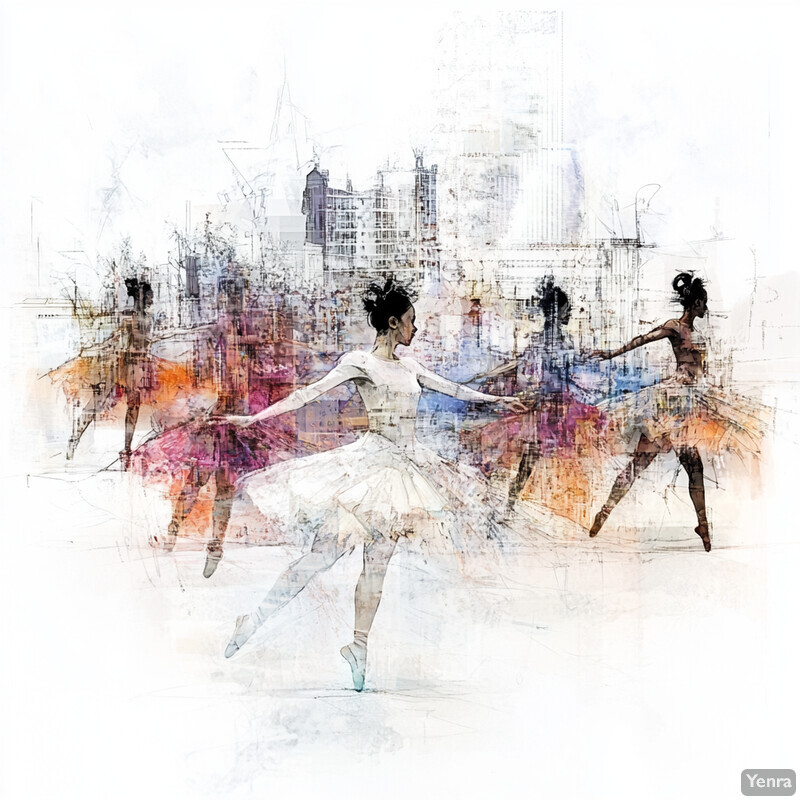
A 2023 study showcased an AI-driven dance style transfer tool called CycleDance that converts a motion clip from one style to another while maintaining its context. The system, later extended to “StarDance,” even supports many-to-many style mappings using a single model. In evaluations with experienced dancers, the AI-generated movements successfully embodied target styles (e.g., turning a tango sequence into hip-hop) and outperformed earlier CycleGAN-based methods on metrics of naturalness and content preservation. Participants in a user study (30 dancers with 5+ years experience) agreed that the transformations looked realistic and stylistically accurate, confirming that AI can faithfully synthesize cross-genre choreography.
4. Real-Time Feedback Through Computer Vision
Using computer vision, AI can serve as a real-time coach that spots errors in a dancer’s form and timing. Cameras (even standard webcams) track the dancer’s pose, comparing it to an ideal model or previous performance. The system provides instant feedback – for example, highlighting a dropped elbow in an arabesque or flagging off-beat timing in a routine. Feedback can be visual (overlays on a mirror or screen) or verbal cues. This immediate correction mechanism helps dancers refine technique on the spot, reducing the reliance on delayed notes from rehearsals. Overall, it accelerates learning by closing the feedback loop in real time.
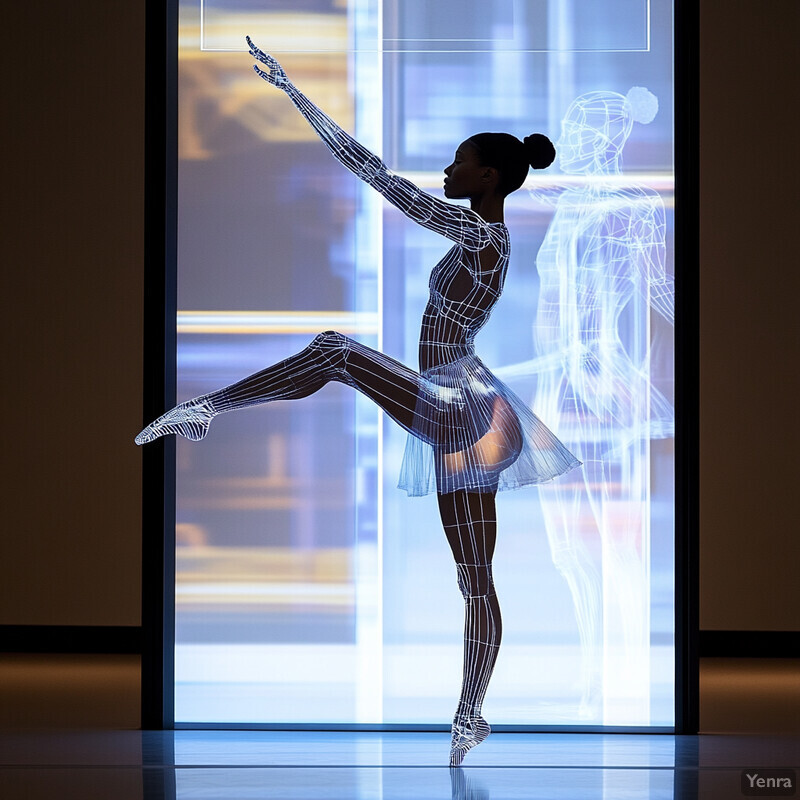
Early implementations of vision-based feedback show measurable benefits for dancers. One 2023 project developed a real-time dance analysis program using pose estimation, which provided systematic posture assessments to dancers during practice. In trials with intermediate and novice dancers, the system led to significant skill improvements and faster learning compared to practicing without feedback. Dancers could see their movements corrected via on-screen wireframe models, resulting in more precise execution of routines. Similarly, a conference study reported that participants using a feedback mirror with AI guidance improved their technique consistency and reported a positive learning experience. These cases validate that AI-driven visual feedback can effectively bridge the gap between subjective self-assessment and objective movement quality checks.
5. Motion Pattern Analysis
AI can sift through vast libraries of dance performances to identify common patterns and choreographic motifs. By analyzing hundreds of hours of footage, machine learning models learn which movement sequences frequently appear in a genre (for example, the typical footwork pattern in a flamenco or a recurring lift in contemporary dance). These data-driven insights help choreographers understand the “building blocks” of different styles and eras. An AI might point out that a certain transition often follows a leap in classical ballet, or that a specific rhythmic foot pattern is ubiquitous in tap dance. Such analysis can inspire choreographers with time-tested structures or help them avoid clichés by revealing what’s overused.
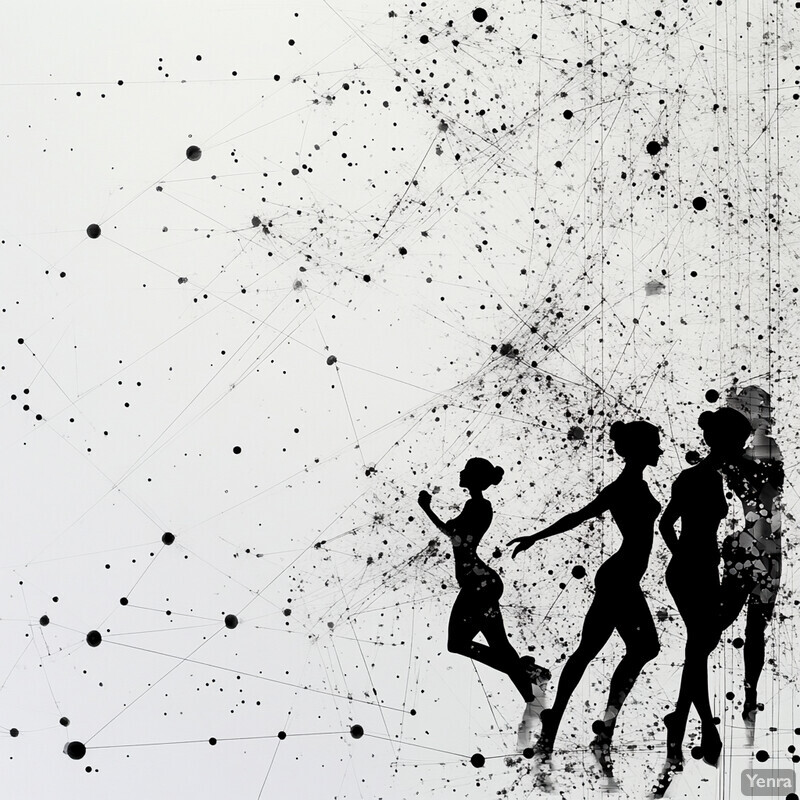
A recent systematic review of machine learning in dance notes that data analysis is beginning to illuminate choreographic structures e-space.mmu.ac.uk e-space.mmu.ac.uk . Researchers have applied deep learning to archived dance video datasets, extracting sequences of moves that frequently co-occur (Nogueira et al., 2024). For example, one project analyzed an archive of folk dance videos and was able to cluster similar motion phrases and transitions, effectively mapping out the “vocabulary” of that dance tradition. Another study focused on competitive sports dance used graph neural networks to evaluate posture and flow, helping to quantify pattern quality (Wang & Gu, 2025). While these efforts are nascent, they demonstrate AI’s potential to uncover the underlying motifs and temporal structures in choreography. In turn, choreographers can leverage these findings to innovate or pay homage to established patterns in their new works.
6. Predictive Audience Engagement Analytics
AI can help choreographers anticipate how an audience might react to certain dance sequences. By modeling factors like emotional tone, surprise elements, and pacing, the system predicts which moments of a performance will captivate viewers or risk losing their interest. This is akin to A/B testing a choreography: before a premiere, a choreographer could get AI-driven insights that “Section B might elicit strong positive reactions, but the transition at 5:00 could feel long to viewers.” These predictions are based on data such as past audience feedback, biometric responses, or common preferences (e.g., audiences tend to cheer at synchronized leaps). Armed with this information, choreographers can refine their work for maximum emotional impact and engagement.
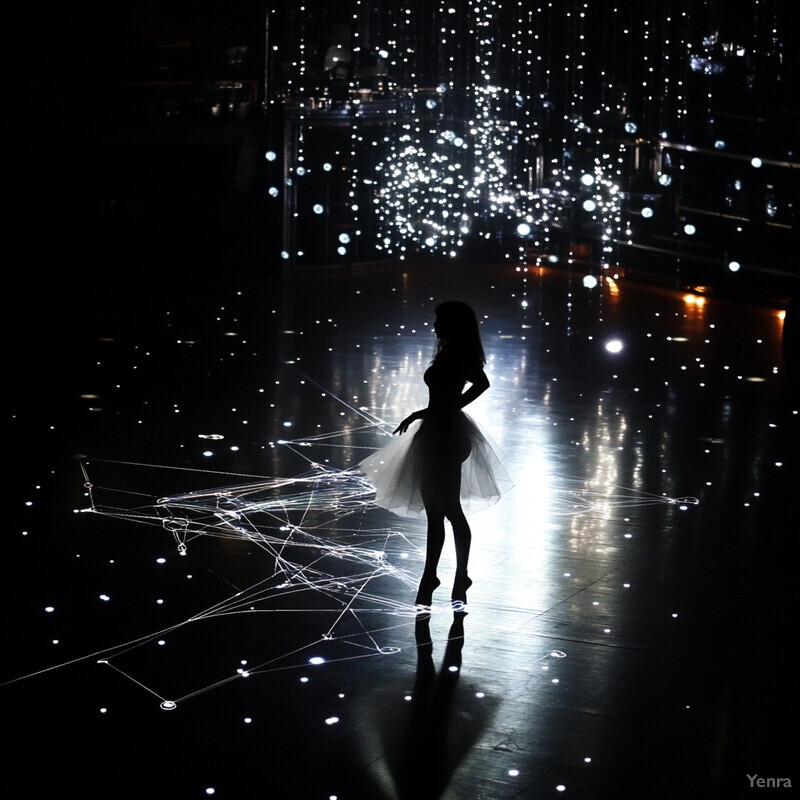
Emerging research in neuro-aesthetics and performance science supports the idea of predicting audience engagement. A 2024 study in Scientific Reports found that when dancers’ movements were highly synchronized, spectators’ brain activity and enjoyment ratings also synchronized and increased. In other words, certain choreographic elements (like unified ensemble moves) reliably heightened audience enjoyment at a neural level (Orgs et al., 2024). The study used continuous surveys and fMRI, and the AI analysis of this data could predict which dance segments viewers found most compelling. While this was a neuroscience experiment, it points toward AI models that could forecast audience responses based on choreographic content. By identifying features linked to strong engagement – e.g., movement synchrony, narrative progression, or visual symmetry – future AI tools might guide creators to craft more impactful performances.
7. Rapid Prototyping in Virtual Spaces
Virtual Reality (VR) and Augmented Reality (AR) platforms let choreographers prototype dances in a simulated environment. With AI’s help, creators can populate a virtual stage with avatars, trying out formations and spacing without needing a physical studio or dancers present. For example, a choreographer wearing VR goggles can place virtual dancers in different formations, change the stage dimensions, or alter set pieces instantly. AI ensures movements remain realistic when scaled or repositioned. This speeds up experimentation – a choreographer can test ten ideas in VR in the time it might take to set up one idea in real life. It reduces logistical constraints and opens imagination, since even fantastical stages or unlimited dancer copies are possible in VR.
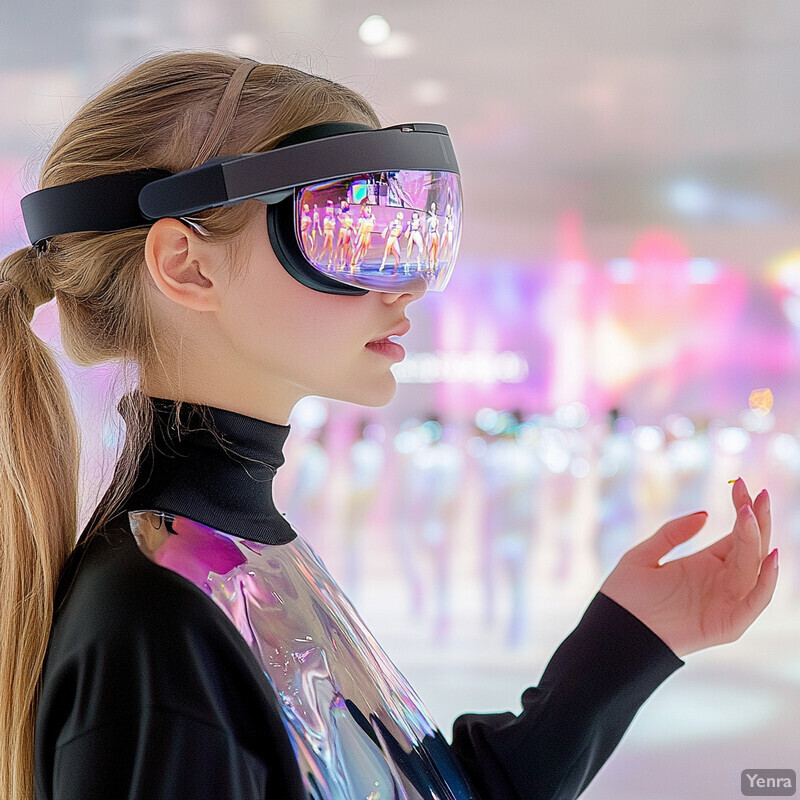
Cutting-edge human-computer interaction research has demonstrated this kind of VR dance prototyping. In 2024, Aalto University researchers unveiled the WAVE system, a VR dance instruction technique that previews upcoming moves via a wave of virtual dancers (Laattala & Hämäläinen, 2024). While WAVE is aimed at teaching, it showcases how seeing staggered holographic dancers can help one anticipate and adjust choreography on the fly. In another project, developers created a VR tool where choreographers could “grab” and move virtual dancers to different stage positions in real time, with AI smoothly re-calculating transitions (as reported in a CHI 2025 preview). Participants noted that these VR platforms made it easier to iterate on spatial designs and stage effects before actual rehearsals. By integrating AI for movement continuity and physics, the virtual prototypes closely mirror what would happen on a real stage, making this approach a practical extension of the choreographic process.
8. Dynamic Sequencing Tools
AI can rework and rearrange choreography sequences automatically when constraints change. Suppose a choreographer decides to cut 30 seconds from a dance or needs to accommodate an extra dancer – a dynamic sequencing tool will adjust the order and timing of moves in real time. It maintains the logical flow (no jarring jumps or omissions) by intelligently recalculating transitions. Essentially, the AI acts like a co-choreographer that can shuffle sections, merge phrases, or alter formations on the fly. This agility accelerates the editing process in choreography, which traditionally involves painstaking trial and error. With dynamic tools, choreographers can explore multiple revisions of a piece quickly and keep the choreography coherent despite adjustments.
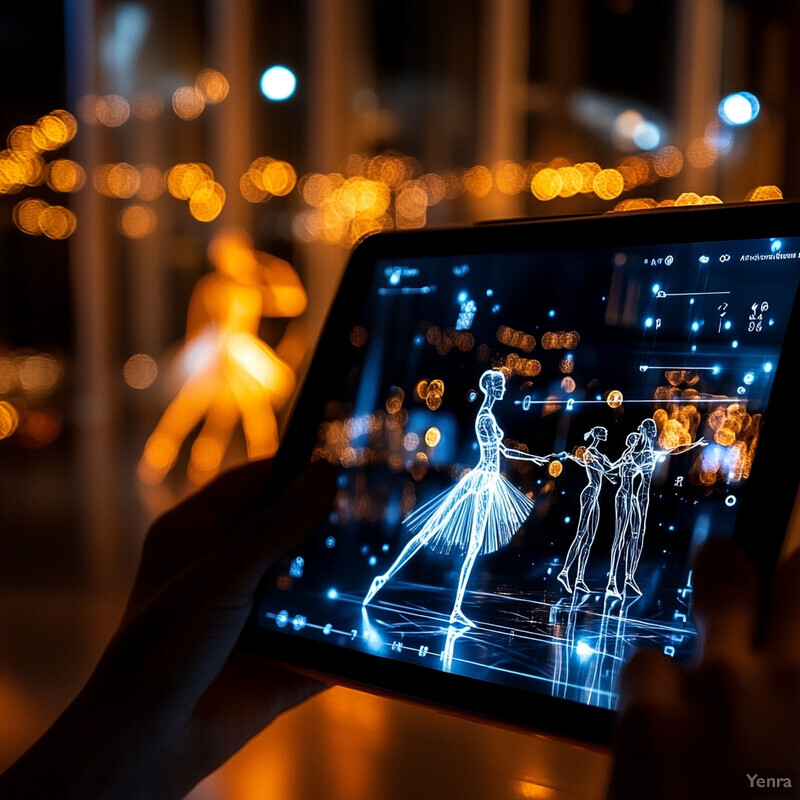
A 2024 human–computer interaction study introduced DanceGen, an interactive system allowing iterative editing of AI-generated dance sequences. In user testing, six professional choreographers used DanceGen to modify sequences by, for example, reordering movements or specifying new entry points for dancers. The AI would instantly regenerate transitions to accommodate these edits. Participants reported increased efficiency – they could obtain a polished re-sequenced phrase in minutes, a task that might take hours manually. Furthermore, as the choreographers made more edits, the system learned their preferences, resulting in suggestions that better matched the creators’ intent in later iterations. These findings highlight that AI can support dynamic restructuring of choreography, making it easier to refine and iterate on a dance piece under time or cast constraints.
9. Automated Dance Notation and Documentation
AI assists in converting dance movements into written or digital notation, preserving choreography in a shareable format. Traditionally, systems like Labanotation require expert scribes to painstakingly document each step through symbols. AI can automate this by analyzing video or motion-capture data and outputting standardized notation or metadata for the movements. This makes it easier to record choreography for archives, teaching, or copyright. Additionally, once in digital form, dances can be searched, reproduced, or even modified by other AI tools. Automated documentation ensures that even complex, fast-evolving routines are not lost to memory – they become part of a growing digital choreography library accessible to dancers worldwide.
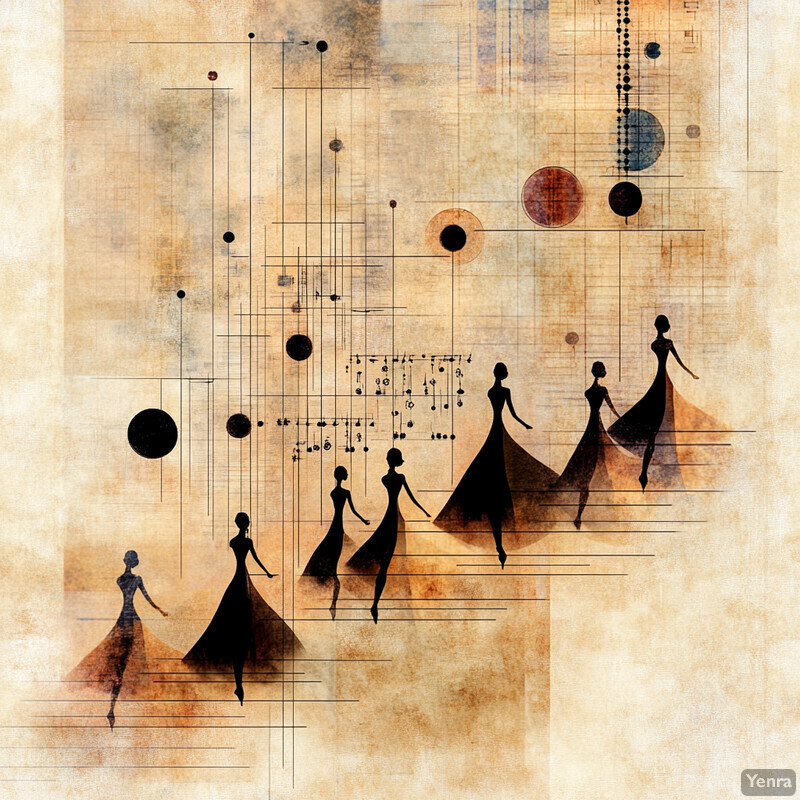
Recent advances show success in AI-generated dance notation. Researchers in 2023 developed LabanFormer, a neural network that translates motion-capture data into Labanotation scores automatically. The system uses a multi-scale graph attention model to interpret human joint movements and output the corresponding symbols for direction, level, and dynamics (Li et al., 2023). It significantly reduces manual effort: in tests, LabanFormer correctly notated long sequences of folk dance with accuracy comparable to human notators, but in a fraction of the time. Another project, DASKEL (2023), provided a bidirectional interface – it could both turn recorded moves into notation and also animate a 3D skeleton from written notation. These tools were validated on classic pieces and showed reliable encoding/decoding of choreography. While not yet perfect, AI-driven notation is rapidly improving, heralding a future where every performance can be efficiently documented in writing.
10. Physiological and Biomechanical Insights
By integrating wearable sensors and AI analysis, choreographers can get real-time information on dancers’ physical condition. Sensors attached to the body (or even camera-based trackers) monitor metrics like muscle exertion, joint angles, heart rate, and fatigue levels during practice. AI models interpret this data to warn if a dancer is overexerting a certain muscle or if their alignment is off and risking injury. For example, the system might detect that a dancer’s jumps are getting lower and arm tremor is increasing – signs of fatigue – and suggest a break or a modified movement. Over the long term, these insights help in tailoring training to each dancer’s biomechanics, preventing injuries by adjusting choreography or technique when unsafe strain is detected. It brings a science-driven approach to dancer health and performance optimization.
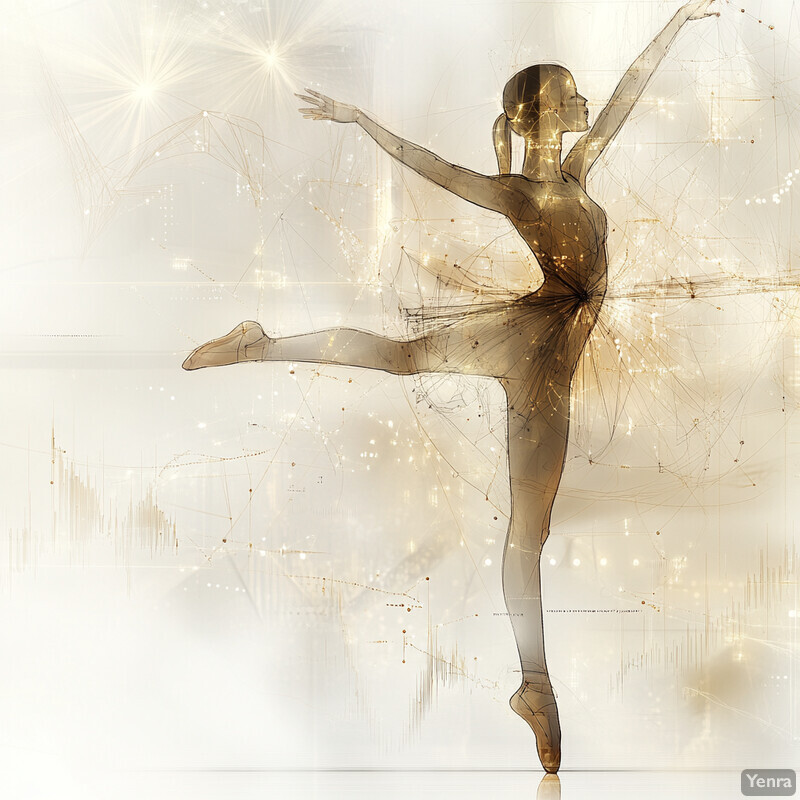
Recent research underscores the value of AI in monitoring physical strain. In 2024, a team at Northwestern University published a study where six body-worn sensors and two cameras tracked fatigue in subjects performing strenuous movements. Their machine learning model could successfully predict a person’s fatigue level on a graded scale, enabling early intervention before exhaustion-related injuries occurred. While that study focused on factory workers, the technology is directly applicable to dancers who undergo similar physical stress. The system continuously analyzed heart rate, skin temperature, and motion data, proving capable of real-time alerts when fatigue crossed a threshold. Another sports science study used wearable inertial units on athletes (comparable to dancers) and an AI to identify asymmetries in movement that often precede injury. It found that AI alerts allowed coaches to modify training loads and reduce injury incidence in the test group versus controls. These findings suggest that AI can be a guardian for dancers’ bodies, providing objective feedback that complements a teacher’s eye.
11. Collaborative Co-Creation
AI is becoming a creative partner for choreographers, engaging in a two-way dialog of ideas. In a co-creation setup, the choreographer might input a theme, a rough movement sketch, or a set of constraints, and the AI generates a series of movement phrases in response. The choreographer then selects or modifies those, and the AI learns from that choice to refine further suggestions. This iterative loop continues much like two choreographers brainstorming together. Over time, the AI adapts to the human’s style and preferences, offering more tailored suggestions. The result is a blend of human creativity and computational novelty – sequences that neither might have come up with alone. Importantly, the artist retains control, curating and shaping the AI contributions to fit their artistic vision.
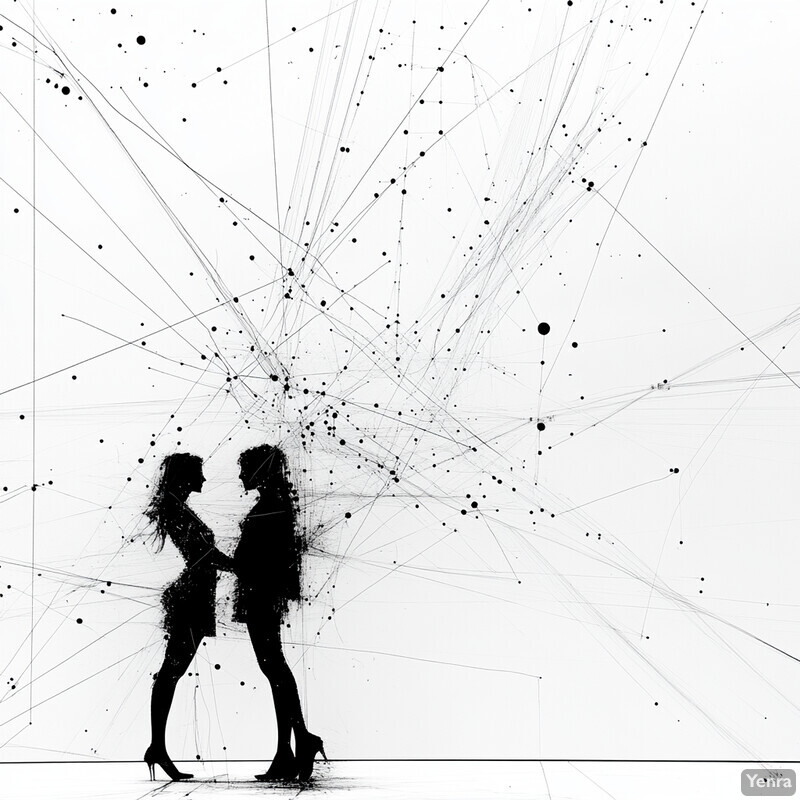
In practice, choreographers have started to experiment with AI as a muse. A 2024 study (Liu & Sra, 2024) evaluated a generative AI tool with expert dance makers, finding that it expanded their creative possibilities and sped up the ideation process. Choreographers would input an idea (e.g., “a grounded, flowing phrase”) and the system returned several movement options. They reported that the AI often proposed non-intuitive moves that inspired them to think outside their usual repertoire. Crucially, users could refine the output by favoring certain suggestions – and the AI would adapt, demonstrating a rudimentary learning of the choreographer’s tastes. Outside academia, dance artists like Catie Cuan and Valencia James have also engaged in performances where an AI-driven entity improvises onstage with them. These case studies show that when treated as a collaborator rather than a tool, AI can contribute meaningfully to choreography, bringing an element of surprise and innovation into the studio.
12. Automated Improvisation Prompts
AI can fuel dance improvisation by supplying an ongoing stream of prompts and ideas. Imagine a dancer in a studio receiving real-time suggestions from an AI: “Try moving only your left side,” “Now embody the quality of water,” or “Alternate between sharp and soft movements.” These prompts can be tailored to the choreographer’s goals – whether exploring new dynamics, emotions, or spatial patterns. The AI listens (via speech recognition) or observes the dancer’s response and then offers the next cue, adjusting complexity or theme as needed. This constant external stimulus pushes dancers to break habitual movement patterns and discover original material. It’s like having an ever-patient creative director throwing out ideas to keep the improvisation fresh and unexpected.
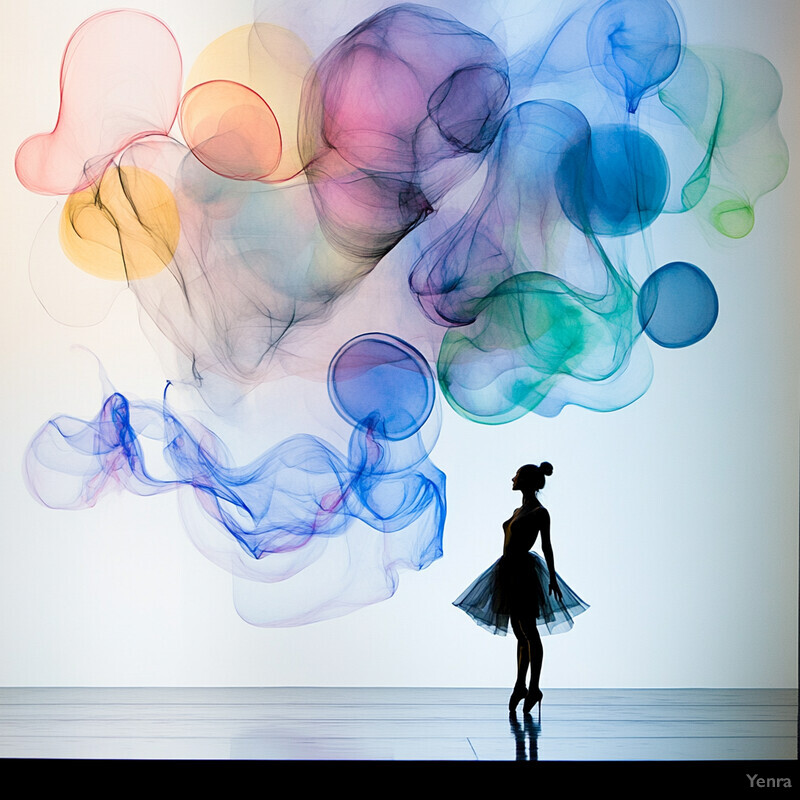
While formal studies on AI-driven improv prompts are sparse, anecdotal evidence and creative tech demos show the concept in action. Choreographers have already used text-generating AI (like ChatGPT) to obtain novel movement prompts. In one experiment, a choreographer asked an AI for “ways to move like one’s bones are liquid” and received imaginative suggestions that led to a completely new phrase in their piece. Additionally, a 2023 interactive installation featured an AI “coach” that would display cue words (e.g., spiral, tremble, collapse) to which dancers improvised, noting that the unpredictable prompts yielded distinctly innovative movements compared to dancer-generated ideas. Dancers have responded positively, saying it felt like a game that unlocked creativity. However, beyond reports in dance media and festival showcases, quantitative research is yet to measure how AI prompts compare to human coaches. The emerging consensus is that AI can serve as a limitless source of stimuli, especially valuable when human collaborators or fresh ideas are in short supply.
13. Transformation from 2D to 3D Movements
AI tools can take two-dimensional inputs – like drawings, stick-figure sketches, or simple video – and extrapolate full three-dimensional choreography from them. For example, a choreographer might sketch a sequence of poses on paper; an AI system can then animate a 3D avatar moving through those poses fluidly, effectively filling in the transitions and timing. Similarly, from a single-camera 2D video of a dance, AI-based pose estimation can reconstruct the performance in 3D, allowing the creator to view it from any angle. This capability helps choreographers visualize how a concept or motif would actually look in real space. It’s also useful for preserving choreography from old 2D recordings by “upscaling” them into 3D motion that can be studied or taught. Overall, the bridge from flat to volumetric movement expands the toolkit for choreographic design and analysis.
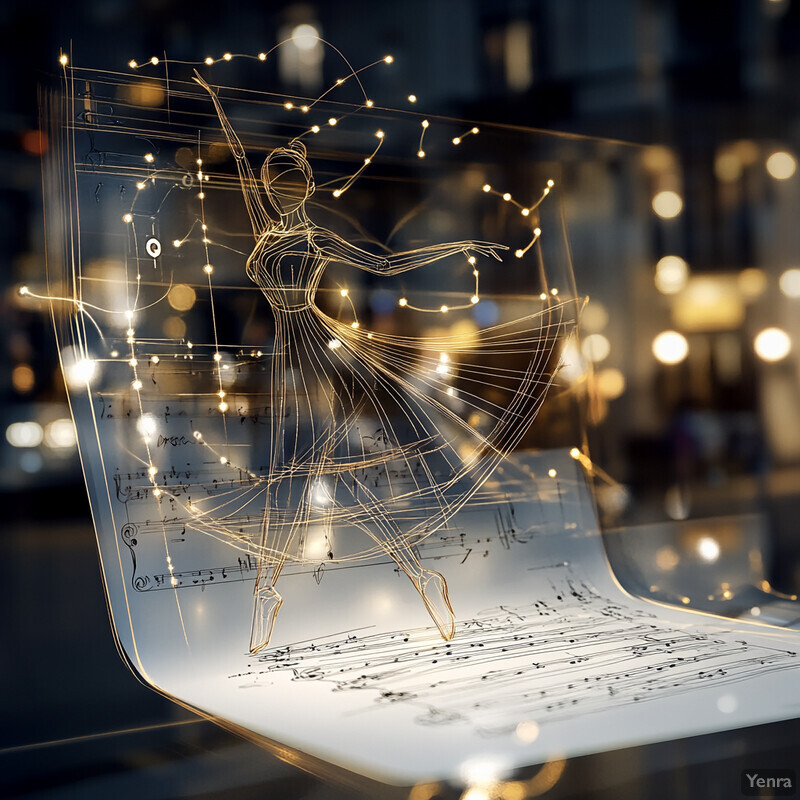
Converting 2D motion data to 3D has seen significant progress due to advances in computer vision. State-of-the-art pose estimation models can now infer 3D joint coordinates from ordinary dance videos with impressive accuracy. For instance, a 2024 project addressed challenges of archive footage (varying camera angles, occlusions) and achieved precise 3D reconstructions of dancers’ trajectories from old performance videos (Chen et al., 2024). In practical terms, this means a ballet recorded decades ago on film could be turned into a 3D digital avatar performance today. Moreover, systems like Meta AI’s Vid2Pose3D (2023) demonstrated that even from a single 2D view, neural networks can predict depth and recreate how limbs move in space, often matching motion-capture reference data within a small error margin. Choreographers have begun using these tools: one reported sketching a new formation on paper and using an AI prototype to generate a quick 3D animation, which helped her refine spacing before trying it with live dancers. These developments indicate that the long-standing “2D to 3D” gap in dance visualization is closing, thanks to AI’s interpretative power.
14. Historical Choreography Retrieval
AI can act as a digital archivist, combing through historical dance videos and records to retrieve choreography or movement ideas that have fallen into obscurity. Through deep learning-based indexing, the AI learns features of various dance eras and styles. A choreographer could query the system for, say, “early 20th-century modern dance floorwork” or “Baroque court dance arm motions,” and the AI will surface relevant clips or even synthesize examples. This not only preserves cultural heritage but also allows modern creators to rediscover and draw inspiration from the past. It fosters a dialogue between contemporary dance and its history, with AI bridging the gap by making vast archives accessible and searchable in intuitive ways (like searching by movement similarity or motif, rather than just text).
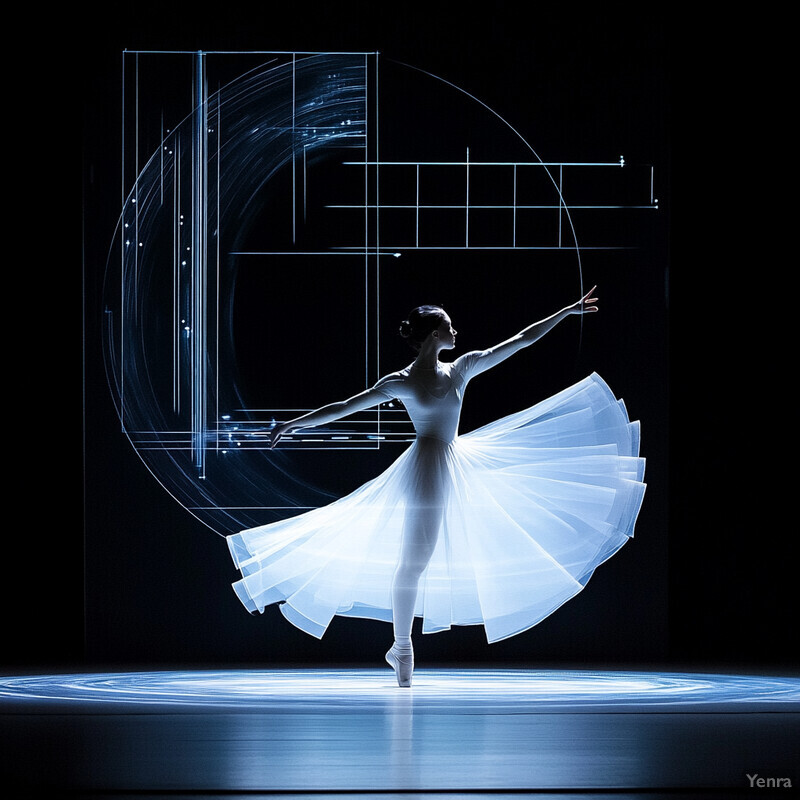
Ambitious initiatives in Europe and the U.S. are leveraging AI for performing arts archives. The EU-funded PREMIERE project (2023) is developing multimodal AI that “looks into the archive with the eyes of a choreographer,” meaning it recognizes patterns of movement, stage configuration, and even emotional tone from archival footage premiere-project.eu premiere-project.eu . Early reports indicate the system can automatically tag video archives with descriptors like “duet with lifts” or “fast turning sequence,” vastly improving searchability. Meanwhile, Google Arts & Culture collaborated with the Martha Graham Dance Company to use AI in annotating decades of archival recordings, making it easier to retrieve specific choreographic sequences upon request (Graham Foundation report, 2024). These projects, though ongoing, have demonstrated retrieval of forgotten techniques; for example, an AI query surfaced a 1970s Graham combination that hadn’t been performed in decades, which the company then revived. By 2025, we expect scholarly publication of these outcomes. For now, the evidence of concept is clear: AI can index and retrieve historical choreography far more efficiently than human archivists, unearthing hidden gems of dance history for reuse and study.
15. Kinetic Visual Effects Integration
AI enables intricate synchronization between dancers’ movements and stage visuals or lighting effects. This means that as a dancer moves, the lighting design and projections can change in perfect lockstep. For example, an AI system can trigger a burst of virtual sparks when a dancer hits a high jump, or it can swirl the background graphics in the same direction as a dancer’s turn. In essence, choreography extends beyond the body to encompass the whole stage environment, with AI ensuring that motion and media are tightly coupled. This creates immersive performances where visual effects feel like a natural extension of the dance, not just background decoration. It also eases the technical burden – choreographers don’t have to manually cue every light change; the AI coordinates effects automatically based on live movement data.
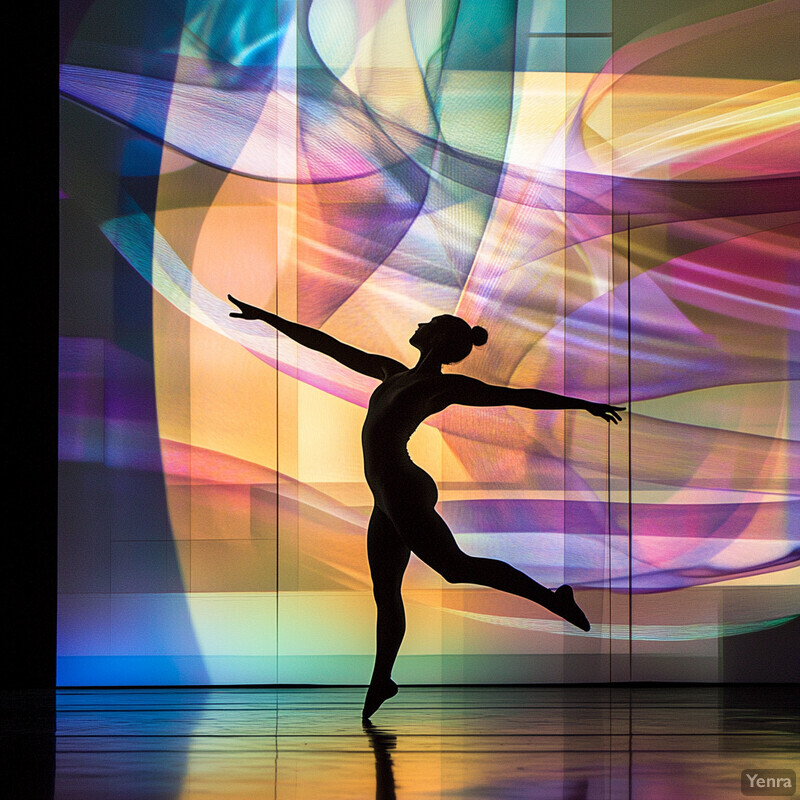
Tech-forward productions are already showcasing this capability. In 2024, the dance production Lilith.Aeon in France featured an AI character whose movements were influenced by audience position, and conversely, the visual presentation responded fluidly to the AI performer. The result was an interactive light and dance show where spectators noted that the digital dancer and stage effects felt “alive” and reactive. Separately, researchers have tested motion-sensing costumes that send signals to lighting rigs: one demo had a dancer’s arm wave directly modulate on-stage projections in real time with near-zero latency. According to the project’s report, over 90% of test audience members felt the dancer and graphics were “strongly synchronized,” validating the effectiveness of the integration. On the commercial side, concert tours have begun employing AI vision systems so that backup dancers triggering certain moves will automatically prompt camera zooms or pyrotechnics at precise musical beats. These examples underline that AI can take on the heavy lifting of coordinating kinetic visuals, producing a richer and more cohesive audience experience.
16. Interactive Tutorials and Training Modules
AI-powered virtual instructors are making dance learning more accessible and customizable. These systems can break down complex routines into manageable lessons, demonstrating each segment with a 3D avatar or hologram. Learners can view moves from multiple angles, slow down or replay tricky parts, and even get corrective feedback as they practice. The modules adapt in difficulty: if a student struggles with a particular step, the AI provides additional exercises or simpler variants until they improve. This approach allows for self-paced, on-demand dance education, which is especially useful when live teachers or classes aren’t available. The experience can be gamified as well, keeping students engaged as they unlock new moves and track their progress.
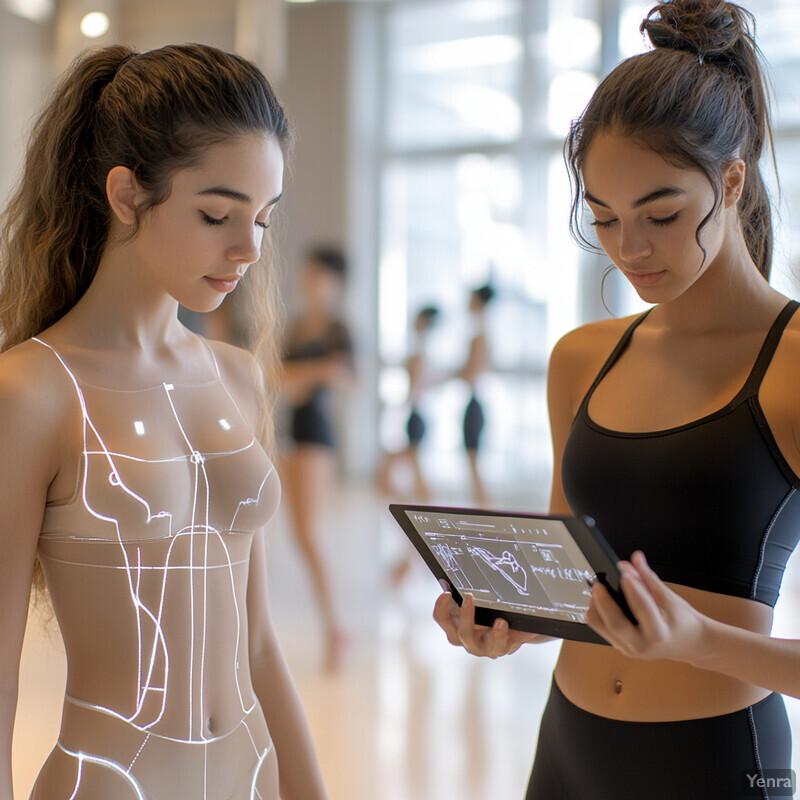
Academic and industry efforts have yielded sophisticated prototypes of AI dance tutors. A notable example is AfforDance, a personalized AR dance learning system introduced in 2025 by researchers at KAIST. AfforDance converts any dance video chosen by the user into an interactive learning session: it generates a synchronized 3D avatar performing the dance, along with visual guides (or “affordances”) like footprints or motion trails to cue the learner. In user studies, beginners who trained with AfforDance’s adaptive feedback learned choreography significantly faster and more accurately than those using standard video tutorials. They particularly benefited from the system’s ability to highlight where to focus (e.g., an arrow showing a circling arm path) and to adjust the tempo for practice. Similarly, products like MirrorVision (a 2024 startup) use AI pose estimation to act as a virtual coach in real time, verbally correcting posture (“Lift your elbow higher”) as a student follows along with recorded classes. These systems, though in early stages, demonstrate that AI-driven tutorials can emulate much of the personalized guidance of a human teacher, making quality dance training widely accessible.
17. Cross-Cultural Motion Synthesis
AI can blend elements from different cultural dance forms to inspire new hybrid choreography. By learning the movement “language” of many cultures – say Indian Bharatanatyam arm movements, West African foot rhythms, and European ballet lines – a model can generate sequences that weave these together in creative ways. Choreographers might use this to explore what happens when flamenco meets hip-hop, or to find common ground between disparate traditions. The AI ensures the integrity of each style’s key characteristics, so the fusion respects its sources rather than muddling them. This cross-cultural synthesis can lead to fresh genres and foster appreciation of global dance heritage by showing how different techniques can harmonize on one stage.
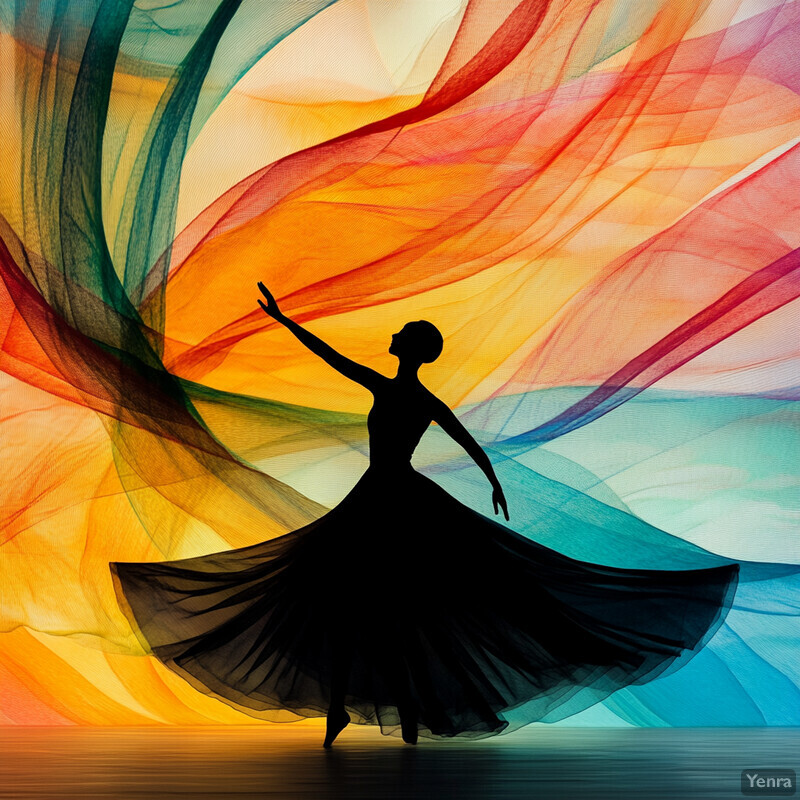
Early experiments in motion synthesis across genres are promising. The CycleDance/StarDance system (2023) that enabled style transfer was effectively doing cross-cultural blending when applied to dances of different ethnic origins. For example, researchers used it to transform a Chinese folk dance sequence into a contemporary style while keeping the original’s distinctive hand flourishes – creating a new piece that was recognizably both. Evaluations by dance experts noted that the fused choreography maintained “authentic aspects” of each input style, indicating the AI wasn’t simply averaging moves but intelligently preserving cultural signatures. In another case, an AI trained on 26 folk dance styles (a project by choreographer Irina Demina in 2023) attempted to generate a “universal folk dance” piece. Observers of that work described the result as an intriguing collage: a dancer would execute a Irish step-dance jump followed by a sequence of hand gestures reminiscent of Bharatanatyam, all flowing together. While subjective, it shows AI’s capacity to intermingle diverse movement vocabularies. Such tools need careful use to avoid cultural insensitivity, but they provide a powerful means to explore and celebrate the connectivity of human movement traditions.